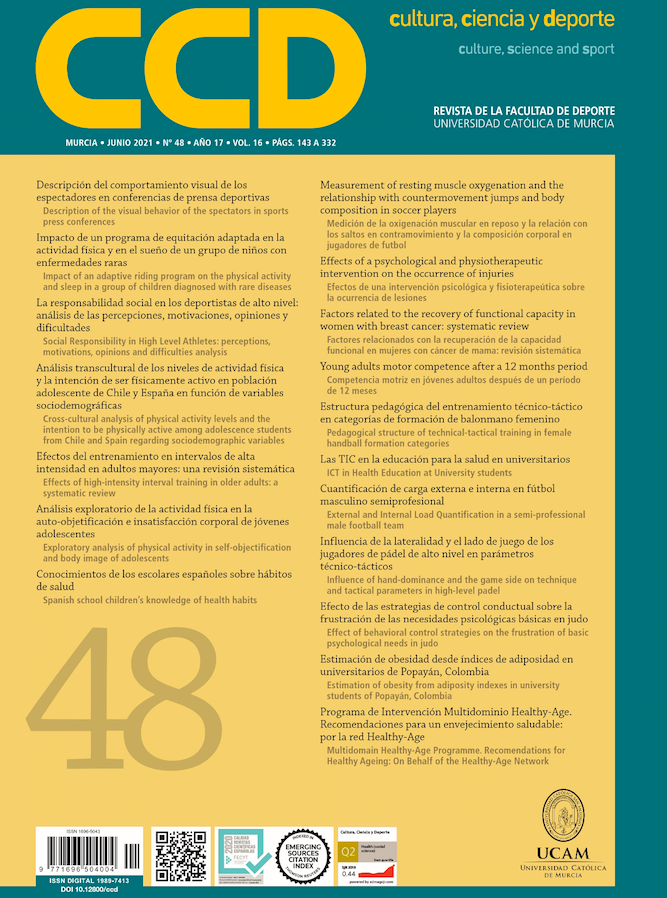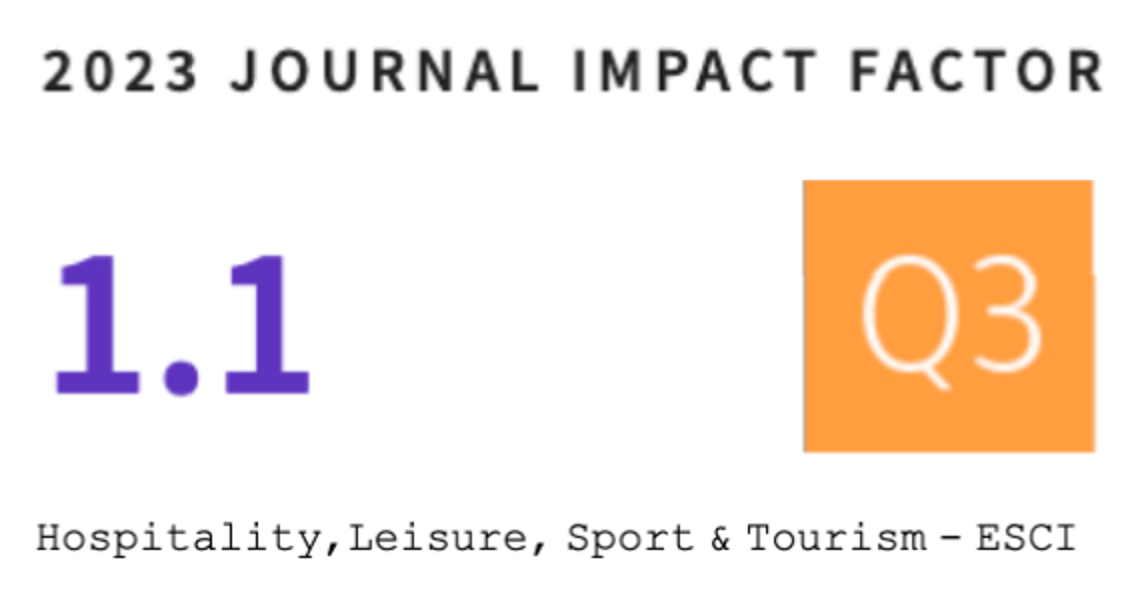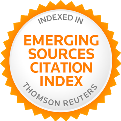Análisis exploratorio de la actividad física en la auto-objetificación e insatisfacción corporal de jóvenes adolescentes (Exploratory analysis of physical activity in self-objectification and body image of adolescents)
DOI:
https://doi.org/10.12800/ccd.v16i48.1724Palabras clave:
actividad física, autoestima, apariencia, imagen corporal (physical activity, self-esteem, appearance, body image)Resumen
El objetivo del presente estudio ha sido analizar las relaciones y diferencias producidas entre la actividad física, la autoestima, apariencia e insatisfacción corporal respecto al género. Un total de 303 adolescentes, masculinos (150) y femeninos (152), con edades comprendidas entre los 10-13 años (M = 11.74) pertenecientes a diferentes centros de Educación Primaria participaron en el estudio. Se empleó el cuestionario PSPP para la valoración de la autoestima y la apariencia, las figuras de Stunkard para la satisfacción corporal y el cuestionario PAQ-A para la valoración de la actividad física. Se realizaron correlaciones de bivariadas, análisis multivariante y análisis de regresión lineal considerando el género. Los resultados mostraron un valor predictivo significativo mayor de la actividad física femenina en la autoestima y la apariencia que en la masculina. A modo de conclusión, destaca la importancia que tiene el rol de la actividad física como precursor de la autoestima, apariencia e insatisfacción corporal. Del mismo modo, la práctica de la actividad física por parte del género femenino tiende a predecir la apariencia y autoestima.
===
The objective of the present study has been to analyze the relationships and differences produced between physical activity, self-esteem, appearance, and body dissatisfaction, regarding gender. A total of 303 adolescents, male (150) and female (152), aged between 10 and 13 years (M = 11.74) belonging to different Primary Education centers participated in the study. The PSPP questionnaire was used for the assessment of self-esteem and appearance, the Stunkard figures for body satisfaction, and the PAQ-A questionnaire for the assessment of physical activity. Bivariate correlations, multivariate analysis, and linear regression analysis were performed considering gender. The results showed a significant predictive value of physical activity in self-esteem and appearance. By way of conclusion, it highlights the importance of the role of physical activity as a precursor of self-esteem and appearance, in addition to body image as a precursor of body satisfaction or dissatisfaction.
Citas
Adams, K. E., Tyler, J. M., Calogero, R., y Lee, J. (2017). Exploring the relationship between appearance-contingent self-worth and self-esteem: The roles of self-objectification and appearance anxiety. Body Image, 23, 176-182. https://doi.org/10.1016/j.bodyim.2017.10.004
Ahedo, R., y Macua, A. (2016). Características de las prácticas de ocio físico-deportivas significativas de los jóvenes españoles. Revista de Psicologia del Deporte, 25(4), 67-72. https://www.redalyc.org/pdf/2351/235149102011.pdf
American Psychological Association. (2002). Ethical principles of psychologists and code of conduct. The American psychologist, 57(12), 1060-1073. https://doi.org/10.1037/0003-066X.57.12.1060
Añez, E., Fornieles-Deu, A., Fauquet-Ars, J., López-Guimerà, G., Puntí-Vidal, J., y Sánchez-Carracedo, D. (2018). Body image dissatisfaction, physical activity and screen-time in Spanish adolescents. Journal of Health Psychology, 23(1), 36-47. https://doi.org/10.1177/1359105316664134
Biddle, S. J. H., Ciaccioni, S., Thomas, G., y Vergeer, I. (2019). Physical activity and mental health in children and adolescents: An updated review of reviews and an analysis of causality. En Psychology of Sport and Exercise (Vol. 42, pp. 146-155). https://doi.org/10.1016/j.psychsport.2018.08.011
Blanco, H., Verónica Benavides, E., Tristán, J. L., y Mayorga-Vega, D. (2017). Actividad física, imagen corporal y autoconcepto personal en jóvenes universitarias Mexicanas. Revista de Psicologia del Deporte, 26, 25-33.
Bratovcic, V., Mikic, B., Kostovski, Z., Teskeredzic, A., y Tanovic, I. (2015). Relaciones entre las diferentes dimensiones de la autopercepción, autoestima e Índice de masa corporal de mujeres estudiantes. International Journal of Morphology, 33(4), 1338-1342. https://doi.org/10.4067/S0717-95022015000400024
Carter, J. S. (2018). Stress and self-esteem in adolescence predict physical activity and sedentary behavior in adulthood. Mental Health and Physical Activity, 14, 90-97. https://doi.org/10.1016/j.mhpa.2018.02.005
Cash, T. (2012). Sociocultural perspectives on body image. Encyclopedia of Body Image and Human Appearance, 2, 334-342. https://doi.org/10.1016/B978-0-12-384925-0.00120-6
Choi, E., y Choi, I. (2016). The associations between body dissatisfaction, body figure, self-esteem, and depressed mood in adolescents in the United States and Korea: A moderated mediation analysis. Journal of Adolescence, 53, 249-259. https://doi.org/10.1016/j.adolescence.2016.10.007
Cox, A. E., Ullrich-French, S., Cole, A. N., y D’Hondt-Taylor, M. (2016). The role of state mindfulness during yoga in predicting self-objectification and reasons for exercise. Psychology of Sport and Exercise, 22, 321-327. https://doi.org/10.1016/j.psychsport.2015.10.001
Duncan, M. J., Al-Nakeeb, Y., y Nevill, A. M. (2009). Effects of a 6-week circuit training intervention on body esteem and body mass index in British primary school children. Body Image, 6(3), 216-220. https://doi.org/10.1016/j.bodyim.2009.04.003
Fernandes, H. M. (2018). Atividade Fisica and Saiide Mental em Adolescentes: O efeito mediador da Autoestima and da Satisfacao Corporal. Revista de Psicologia del Deporte, 27(1), 67-76.
Fernández-Bustos, J. G., González-Martí, I., Contreras, O., y Cuevas, R. (2015). Relación entre imagen corporal y autoconcepto físico en mujeres adolescentes. Revista Latinoamericana de Psicologia, 47(1), 25-33. https://doi.org/10.1016/S0120-0534(15)30003-0
Flanagan, E. W., y Perry, A. C. (2018). Perception of physical fitness and exercise self-efficacy and its contribution to the relationship between body dissatisfaction and physical fitness in female minority children. International Journal of Environmental Research and Public Health, 15(6). https://doi.org/10.3390/ijerph15061187
Fox, K. R., y Corbin, C. B. (1989). The Physical Self-Perception Profile: devlopment and preliminary validation. Journal of Sport and Exercise Psychology, 11(4), 408-430. https://doi.org/10.1123/jsep.11.4.408
Fredrickson, B. L., y Roberts, T. A. (1997). Toward understanding women’s lived experiences and mental health risks. Psychology of Women Quarterly, 21(2), 173-206. https://doi.org/10.1111/j.1471-6402.1997.tb00108.x
Garn, A. C., Moore, E. W., Centeio, E. E., Kulik, N., Somers, C., y McCaughtry, N. (2019). Reciprocal effects model of children’s physical activity, physical self-concept, and enjoyment. Psychology of Sport and Exercise, 45. https://doi.org/10.1016/j.psychsport.2019.101568
Garn, A. C., Morin, A. J. S., White, R. L., Owen, K. B., Donley, W., y Lonsdale, C. (2019). Moderate-to-vigorous physical activity as a predictor of changes in physical self-concept in adolescents. Health Psychology. https://doi.org/10.1037/hea0000815
Gomez-Baya, D., Mendoza, R., Matos, M. G. de, y Tomico, A. (2017). Sport participation, body satisfaction and depressive symptoms in adolescence: a moderated-mediation analysis of gender differences. European Journal of Developmental Psychology, 16(2), 183-197. https://doi.org/10.1080/17405629.2017.1364988
Grao-Cruces, A., Fernández-Martínez, A., y Nuviala, A. (2017). Asociación entre condición física y autoconcepto físico en estudiantes españoles de 12-16 años. Revista Latinoamericana de Psicologia. https://doi.org/10.1016/j.rlp.2016.09.002
Guijarro-Romero, S., Mayorga-Vega, D., Viciana, J., Casado-Robles, C., Gråstén, A., y Jaakkola, T. (2020). Students’ physical activity intensity and sedentary behaviour by physical self-concept profiles: A latent profile analysis. [Intensidad de la actividad física y comportamiento sedentario de los estudiantes por perfiles de autoconcepto físico: Un análisis . RICYDE. Revista internacional de ciencias del deporte, 16(59), 85-101. https://doi.org/10.5232/ricyde2020.05907
Haugen, T., Ommundsen, Y., y Seiler, S. (2013). The relationship between physical activity and physical self-esteem in adolescents: The role of physical fitness indices. En Pediatric Exercise Science (Vol. 25, Número 1, pp. 138-153). https://doi.org/10.1123/pes.25.1.138
Kowalski, K. C., Crocker, P. R. E., & Donen, R. M. (2004). The Physical Activity Questionnaire for Older Children ( PAQ-C ) and Adolescents ( PAQ-A ) Manual. College of Kinesiology, University of Saskatchewan. https://doi.org/Accessed on 15 September 2017
Li, C., Zayed, K., Muazzam, A., Li, M., Cheng, J., y Chen, A. (2015). Motives for exercise in undergraduate muslim women and men in Oman and Pakistan compared to the United States. Sex Roles, 72(1-2), 68-84. https://doi.org/10.1007/s11199-014-0435-z
Li, R., Bunke, S., y Psouni, E. (2016). Attachment relationships and physical activity in adolescents: The mediation role of physical self-concept. Psychology of Sport and Exercise, 22, 160-169. https://doi.org/10.1016/j.psychsport.2015.07.003
Marcos Pardo, P. J., Borges Silva, F., Rodríguez Sierra, A., Huéscar Hernández, E., y Moreno Murcia, J. A. (2011). Indicios de cambio en los motivos de práctica físico-deportiva según el sexo y la edad. Apuntes psicol, 123-132. file:///C:/Users/youhe/Downloads/kdoc_o_00042_01.pdf
Marsh, H. W., Martin, A. J., y Jackson, S. (2010). Introducing a short version of the physical self description questionnaire: New strategies, short-form evaluative criteria, and applications of factor analyses. Journal of Sport and Exercise Psychology, 32(4), 438-482. https://doi.org/10.1123/jsep.32.4.438
Moreno-Murcia, J., Gimeno, E., Lacárcel, J., y Pérez, L. (2007). Physical self-concept of Spanish schoolchildren: Differences by gender, sport practice and levels of sport involvement. Journal of Education and Human development, 1(2), 1-17.
Nationa Library of Medicine, U. (2016). MeSH Browser. Retrieved October 06, 2020, from https://meshb.nlm.nih.gov/record/ui?ui=D000067029
Neumark-Sztainer, D., Goeden, C., Story, M., & Wall, M. (2004). Associations between body satisfaction and physical activity in adolescents: Implications for programs aimed at preventing a broad spectrum of weight-related disorders. Eating Disorders, 12(2), 125-137. https://doi.org/10.1080/10640260490444989
Poitras, V. J., Gray, C. E., Borghese, M. M., Carson, V., Chaput, J. P., Janssen, I., Katzmarzyk, P. T., Pate, R. R., Connor Gorber, S., Kho, M. E., Sampson, M., y Tremblay, M. S. (2016). Systematic review of the relationships between objectively measured physical activity and health indicators in school-aged children and youth. En Applied Physiology, Nutrition and Metabolism (Vol. 41, Número 6, pp. S197-S239). https://doi.org/10.1139/apnm-2015-0663
Prichard, I., McLachlan, A. C., Lavis, T., y Tiggemann, M. (2018). The impact of different forms of fitspiration imagery on body image, mood, and self-objectification among young women. Sex Roles, 78(11-12), 789-798. https://doi.org/10.1007/s11199-017-0830-3
Rees, R., Oliver, K., Woodman, J., y Thomas, J. (2011). The views of young children in the UK about obesity, body size, shape and weight: A systematic review. BMC Public Health, 11. https://doi.org/10.1186/1471-2458-11-188
Revuelta, L., Esnaola, I., y Goñi, A. (2016). Relaciones entre el autoconcepto físico y la actividad físico-deportiva adolescente. Revista Internacional de Medicina y Ciencias de la Actividad Fisica y del Deporte, 16(63), 561-581. https://doi.org/10.15366/rimcafd2016.63.010
Rey, O., Vallier, J. M., Nicol, C., Mercier, C. S., y Maïano, C. (2017). Effects of combined vigorous interval training program and diet on body composition, physical fitness, and physical self-perceptions among obese adolescent boys and girls. Pediatric Exercise Science, 29(1), 73-83. https://doi.org/10.1123/pes.2016-0105
Sabiston, C. M., Pila, E., Vani, M., y Thogersen-Ntoumani, C. (2019). Body image, physical activity, and sport: A scoping review. Psychology of Sport and Exercise, 42, 48-57. https://doi.org/10.1016/j.psychsport.2018.12.010
Sani, S. H., Fathirezaie, Z., Brand, S., Pühse, U., Holsboer-Trachsler, E., Gerber, M., y Talepasand, S. (2016). Physical activity and self-esteem: Testing direct and indirect relationships associated with psychological and physical mechanisms. Neuropsychiatric Disease and Treatment, 12, 2617-2625. https://doi.org/10.2147/NDT.S116811
Slater, A., y Tiggemann, M. (2015). Media exposure, extracurricular activities, and appearance-related comments as predictors of female adolescents’ self-objectification. Psychology of Women Quarterly, 39(3), 375-389. https://doi.org/10.1177/0361684314554606
Sonstroem, R. J., y Morgan, W. P. (1989). Exercise and self-esteem: Rationale and model. Medicine and Science in Sports and Exercise, 21(3), 329-337. https://doi.org/10.1249/00005768-198906000-00018
Stice, E., y Shaw, H. E. (2002). Role of body dissatisfaction in the onset and maintenance of eating pathology: A synthesis of research findings. Journal of Psychosomatic Research, 53(5), 985-993. https://doi.org/10.1016/S0022-3999(02)00488-9
Stunkard, A. J., Sørensen, T., y Schulsinger, F. (1983). Use of the danish adoption register for the study of obesity and thinness. Research publications - Association for Research in Nervous and Mental Disease, 60, 115-120.
Tiggemann, M., y Slater, A. (2015). The role of self-objectification in the mental health of early adolescent girls: predictors and consequences. Journal of Pediatric Psychology, 40(7), 704-711. https://doi.org/10.1093/jpepsy/jsv021
Tylka, T. L., y Homan, K. J. (2015). Exercise motives and positive body image in physically active college women and men: Exploring an expanded acceptance model of intuitive eating. Body Image, 15, 90-97. https://doi.org/10.1016/j.bodyim.2015.07.003
Descargas
Publicado
Cómo citar
Número
Sección
Licencia
Los autores que publican en esta revista están de acuerdo con los siguientes términos:- Los autores conservan los derechos de autor y garantizan a la revista el derecho de ser la primera publicación del trabajo al igual que licenciado bajo una Creative Commons Attribution License que permite a otros compartir el trabajo con un reconocimiento de la autoría del trabajo y la publicación inicial en esta revista.














